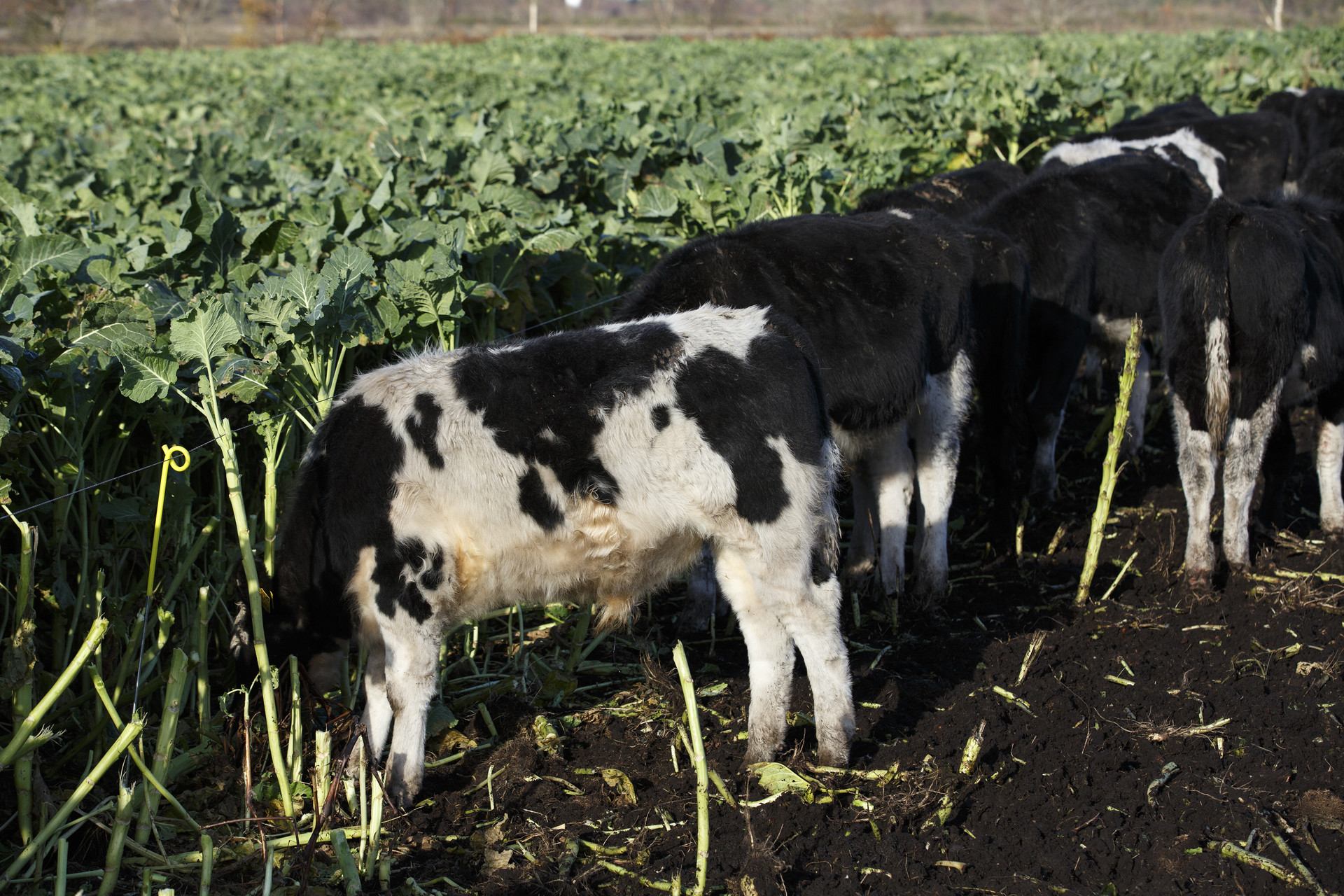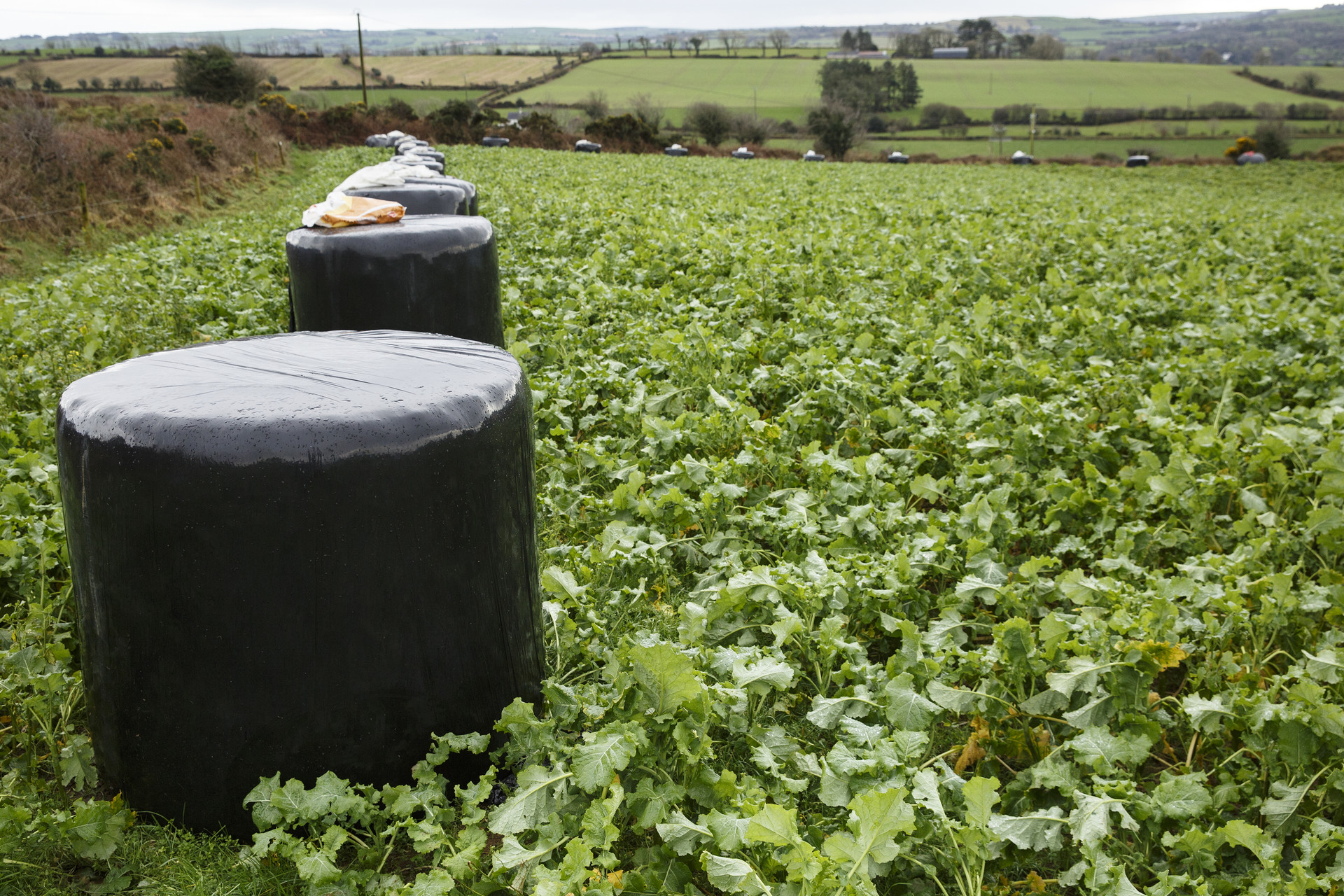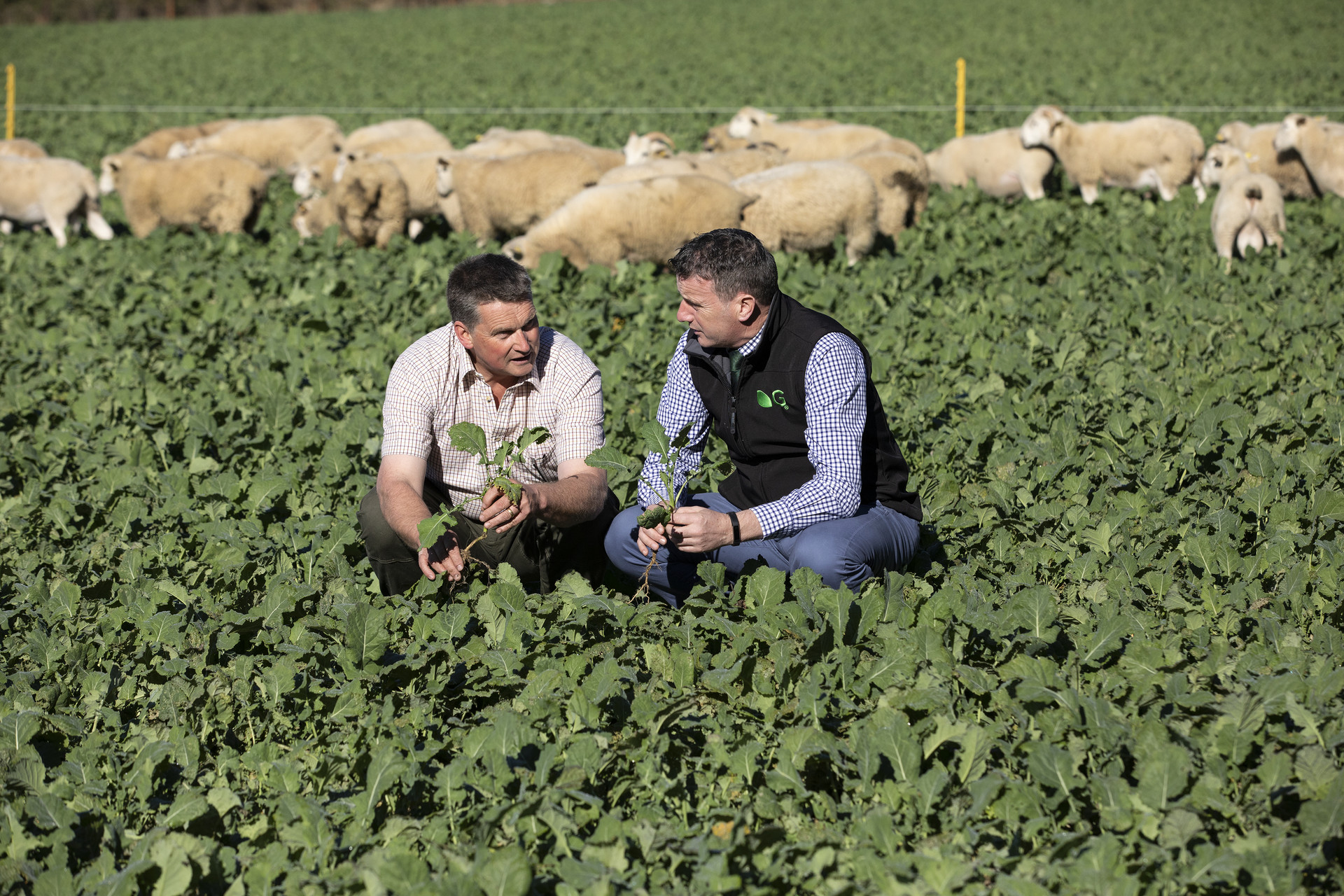Without doubt, grass has to be the first priority for feeding livestock efficiently, however foraged crops can play a valuable role both for out-wintering livestock and overcoming grass shortages during the summer months.
There are a number of options available to farmers when choosing fodder crops, but there are three fundamental questions to answer before deciding on the most cost-effective type of forage crop for your livestock production system.
- When do you want to utilize the crop?
- When will the land for growing the forage crop become vacant?
- How many animals do you need the crop to feed?
 Weanlings grazing a crop of Maris Kestrel kale
Weanlings grazing a crop of Maris Kestrel kale
Choosing the right brassica crop
The most popular options for winter forage are kale, hybrid brassicas or forage rape. Kale should be sown in May/June but the field is then out of action for a longer period of time. For grazing, ensure you choose higher quality varieties, with a good leaf: stem ratio and good leaf proportion, as this is the highest quality part of the plant. Maris Kestrel kale is one such variety suitable for sheep and cattle grazing.
Maris Kestrel kale has high digestibility and a long utilisation period. Animals can utilise the entire plant and it serves as an ideal late summer/early autumn feed for cattle or sheep. It also provides a solution to overcoming late season grazing deficits.
For multi-graze brassica crops such as Redstart, now is the optimum time for sowing. For single overwinter grazing, Redstart can be sown in July or August. It is well documented that a days growth in July, is worth a week in August, or a month in September, so sowing the crop on time will result in higher yields for grazing.
There is a difference between varieties as some varieties are more suitable than others for grazing animals. Tall varieties, tend to have less leaf, are lower in quality and generally more suitable as bird cover.
 A crop of Maris Kestrel kale can yield 10 t DM/ha
A crop of Maris Kestrel kale can yield 10 t DM/ha
Maris Kestrel kale
- Outstanding leaf:stem ratio = high quality feed
- Vigorous early growth
- Expected yield of 10 t DM/ha
- Metabolisable energy of 12.5-13.5 MJ/ kg DM
- Sow in May/June
- Recommended sowing rate is 2.5 to 3 kg/acre if drilled or 4.0 kg/acre if broadcast
Redstart Hybrid Brassica
The hybrid brassica, Redstart offers the highly beneficial combination of rapid growth ability and good all year around performance. It was a hugely popular choice on farms in 2018 to increase feed availability, as a result of the drought. The forage rape genes in Redstart allow the crop to grow quickly, while the kale genes deliver excellent winter hardiness. Redstart is mainly used as a high energy protein crop for out-wintering cattle and sheep.
- Can be sown from May to August for multi-grazing and is ideal for finishing lambs. Sow July/August for single-graze outwintering
- Excellent leaf:stem ratio = high quality feed
- Expected yield of 6-8 t DM/ha @ 12-14% DM and 18-20% CP
- Energy levels of 10-11 MJ/kg DM
- Recommended sowing rate is 3 to 3.5 kg/acre if drilled or 4.0 kg/acre if broadcast
- Ready for grazing 90-110 days after sowing
Considerations
Brassicas have a high requirement for nitrogen (N) phosphorus (P) and potassium (K) and an adequate supply of these nutrients is critical to maximise the yield potential of the crop. However, remaining within your nitrates directive allowances is important.
In addition, brassicas are low in fibre, therefore supplementing with a fibre source is critical for animal health. It is also important to ensure animals have constant access to fresh water when grazing the crop.
 Fibre supplementation is essential when feeding forage crops. Bales placed in the field during the summer minimise both soil and crop damage, while also reducing workload.
Fibre supplementation is essential when feeding forage crops. Bales placed in the field during the summer minimise both soil and crop damage, while also reducing workload.
Site selection
- When choosing a field for growing forage crops for out-wintering, pick a field that will dry out quickly and does not have an extreme slope. The field should not be close to watercourses or water supplies (cross-compliance is a consideration).
- Ideally, choose fields where grass production is falling and it can be incorporated into a grass reseeding program.
- Club root is a threat to brassicas. A one in five year rotation is advised to keep club root levels low.
Sowing advice
- Soil test prior to sowing.
- Soil pH is critically important as crops will perform best under good soil pH and fertility status. Soil pH should be at least 6.0 at sowing (optimum is 6.2 to 7.0).
- Spray off old sward with glyphosate.
- If min-till, use a minimum of 2 bags of granulated lime.
- Seed is generally sown into a cultivated seedbed but can also be direct drilled or broadcast. If broadcasting, you will need to increase the seed rate.
- Sow seeds into a fine, firm seedbed at a maximum depth of 10mm to ensure uniform germination.
- Roll well after sowing.
- Apply adequate N, P and K as per crop requirements.
- Monitor the crop closely as it establishes.
 Farmer William Hutchinson and Dermot Campion, Germinal Ireland observe finishing lambs on a multi-graze Redstart crop
Farmer William Hutchinson and Dermot Campion, Germinal Ireland observe finishing lambs on a multi-graze Redstart crop
Ask the grass and forage experts
